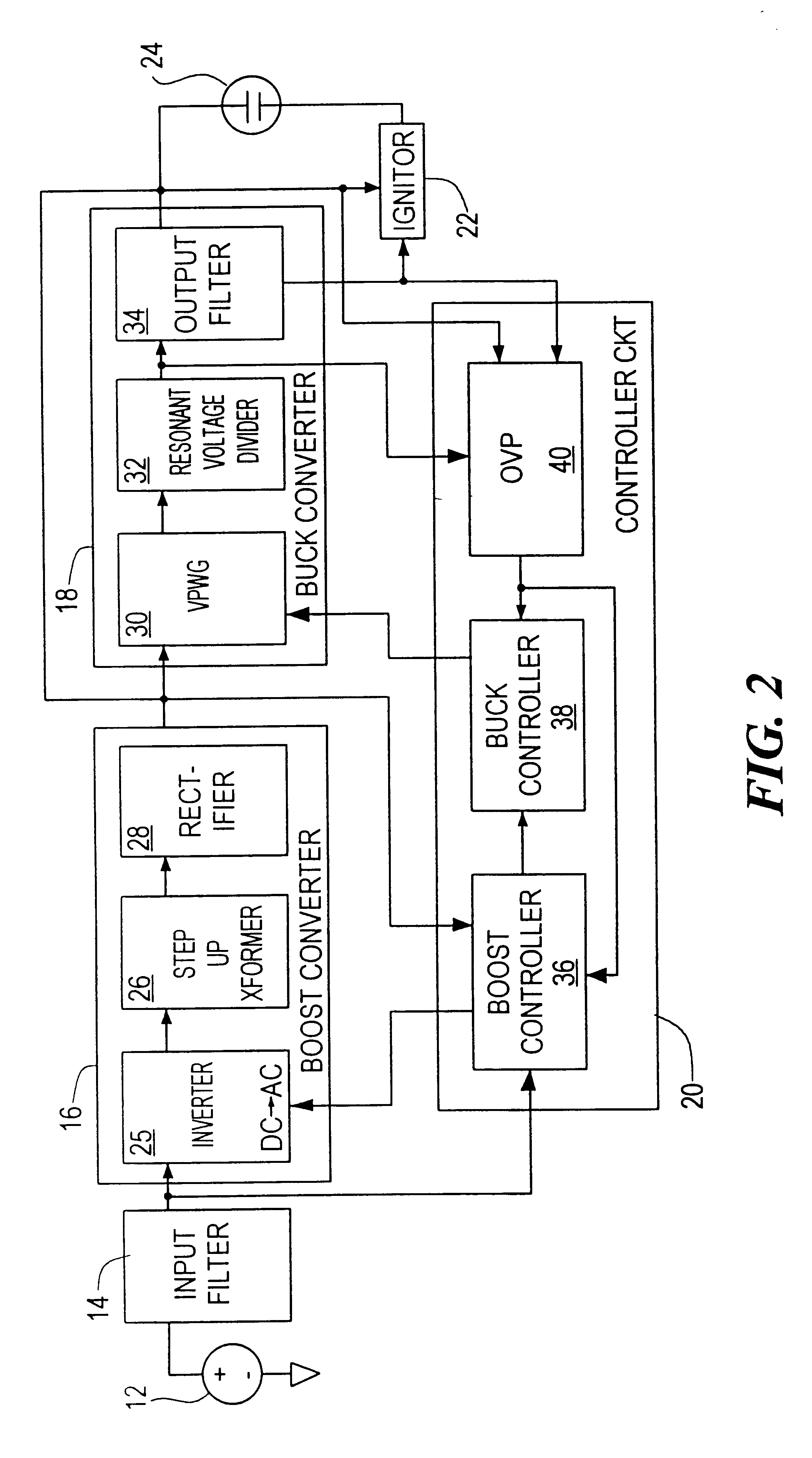Ballast circuit for high intensity discharge lamps
a discharge lamp and ballast circuit technology, applied in the direction of electric variable regulation, process and machine control, instruments, etc., can solve the problems of high power loss in heat, light flickering, and add to the cost of producing these circuits, so as to minimize current levels being manipulated, eliminate flickering, and eliminate flicker
- Summary
- Abstract
- Description
- Claims
- Application Information
AI Technical Summary
Benefits of technology
Problems solved by technology
Method used
Image
Examples
Embodiment Construction
Other objects, features and advantages will occur to those skilled in the art from the following description of a preferred embodiment and the accompanying drawings, in which:
FIG. 1 is a schematic block diagram of a high intensity discharge lamp system including the ballast circuit of the present invention comprising a boost converter circuit, a buck converter circuit and a controller circuit;
FIG. 2 is a more detailed schematic block diagram of FIG. 1 in which the boost converter, buck converter and controller circuits are further broken down into respective component circuits;
FIG. 3 is a schematic diagram of a boost converter and a portion of the controller circuit according to the present invention;
FIG. 4A is a schematic diagram of a trigger circuit used to ignite a high intensity discharge lamp having an ignition voltage of less than 10 KV;
FIG. 4B is a schematic diagram of a trigger circuit, similar to FIG. 4A, used to ignite a high intensity discharge lamp having an ignition vol...
PUM
 Login to View More
Login to View More Abstract
Description
Claims
Application Information
 Login to View More
Login to View More - R&D
- Intellectual Property
- Life Sciences
- Materials
- Tech Scout
- Unparalleled Data Quality
- Higher Quality Content
- 60% Fewer Hallucinations
Browse by: Latest US Patents, China's latest patents, Technical Efficacy Thesaurus, Application Domain, Technology Topic, Popular Technical Reports.
© 2025 PatSnap. All rights reserved.Legal|Privacy policy|Modern Slavery Act Transparency Statement|Sitemap|About US| Contact US: help@patsnap.com



